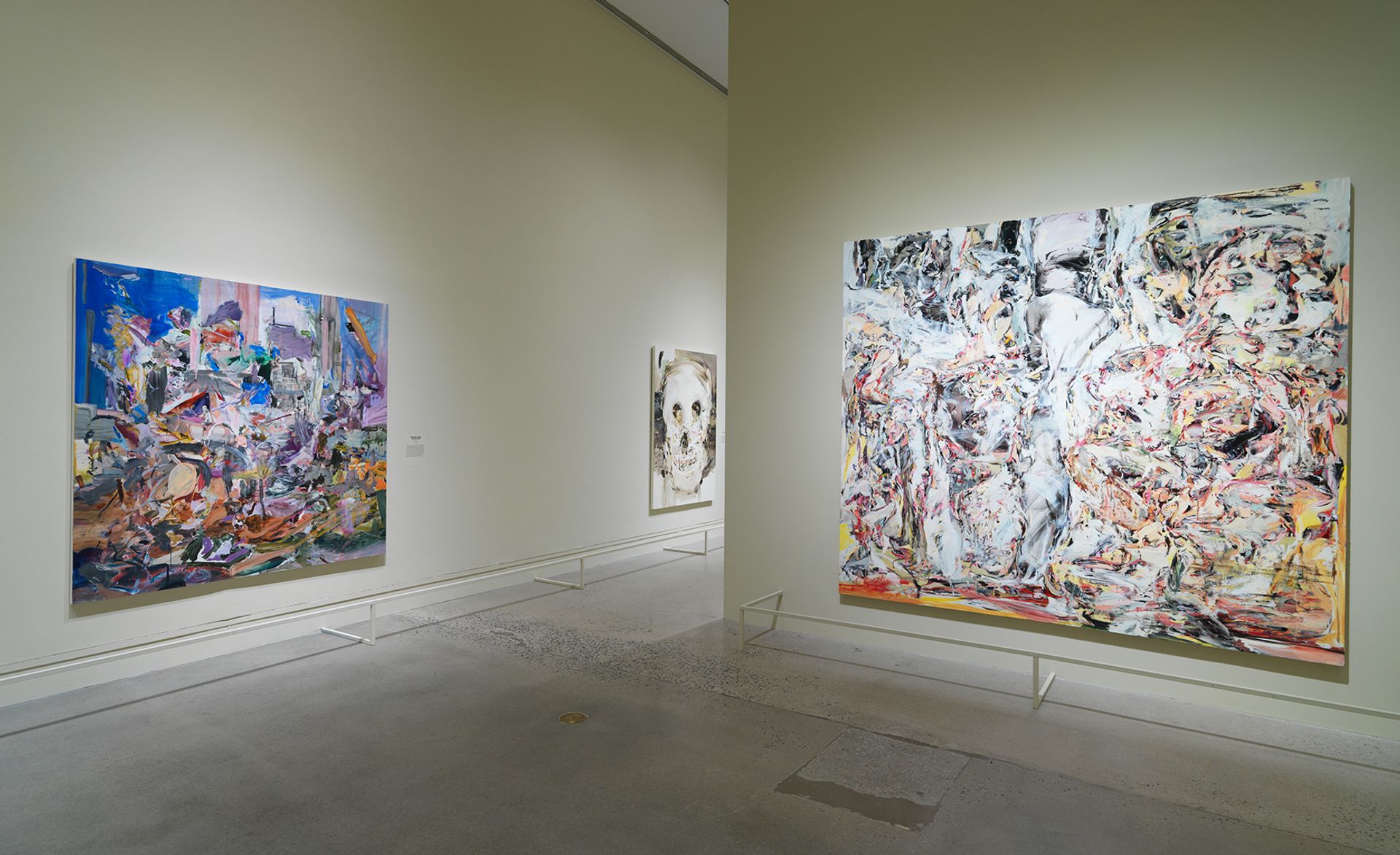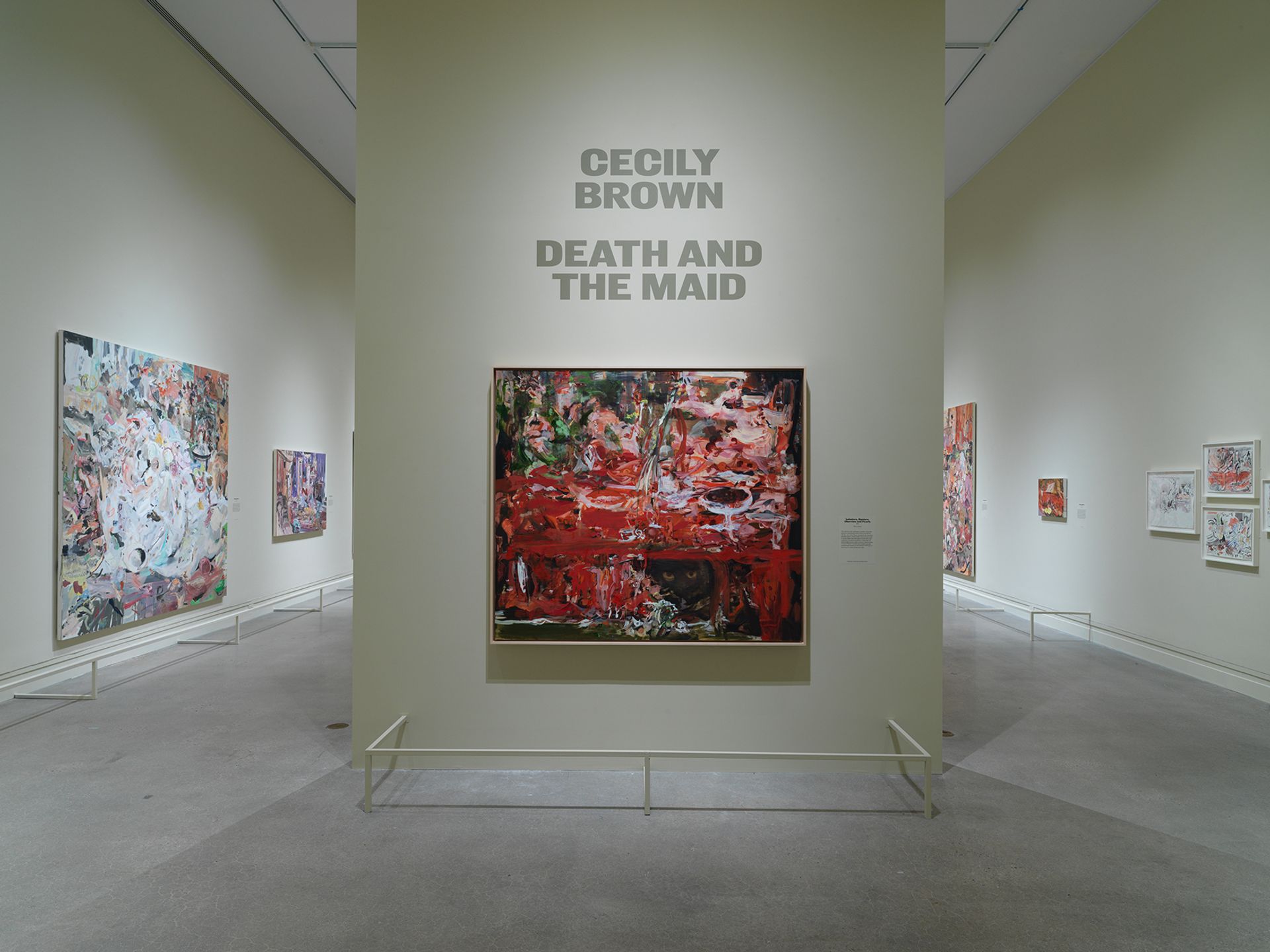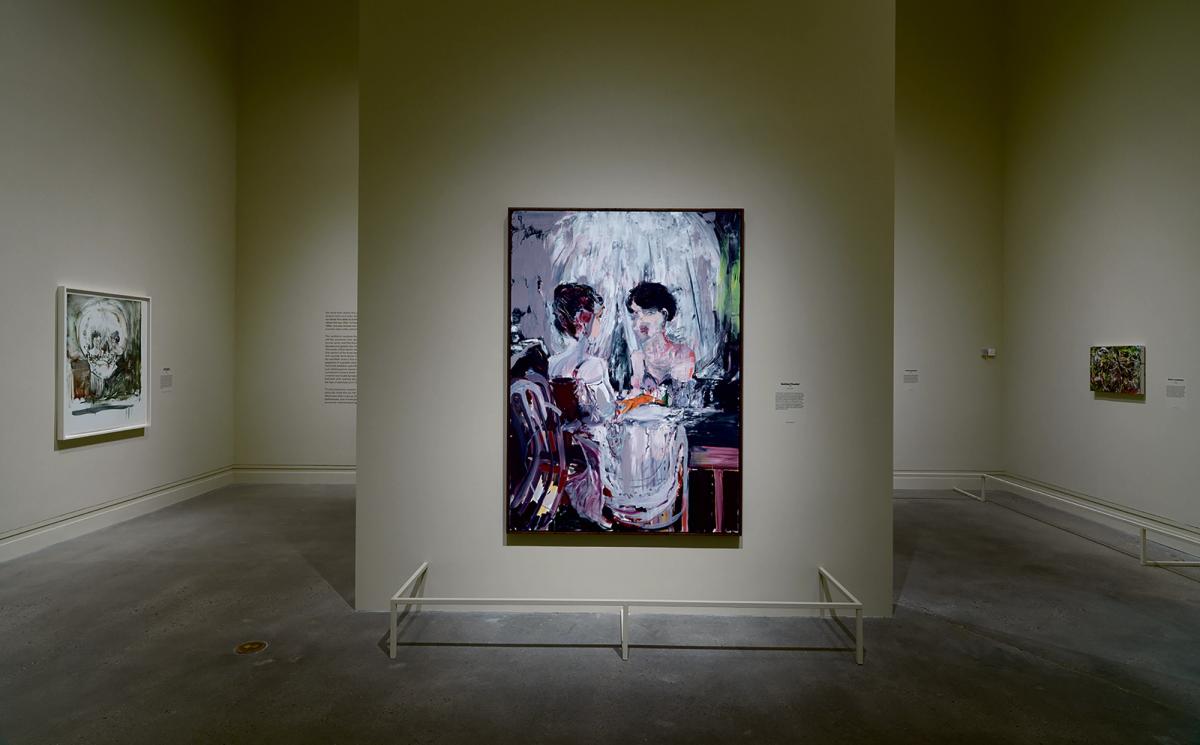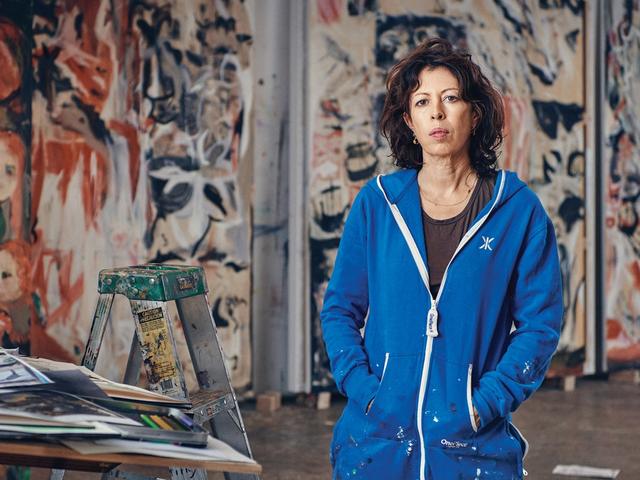When Cecily Brown graduated from London’s Slade School of Fine Art in 1993, the powers that be in the art world had pronounced painting a dead medium. Between the popularity of the Young British Artists and the parallel ascendance of market-approved conceptual installation, oil on canvas felt old-fashioned at best, stale at worst. This confluence of factors made Brown’s runaway success notable, but never unlikely—her fragmentary figural abstractions reinvigorated painting for a new generation and set her apart as a truly original storyteller across genres. Her singular, sanguine eye is on prominent display in Death and the Maid at New York’s Metropolitan Museum of Art.

Installation view of Cecily Brown: Death and the Maid
Photo: Paul Lachenauer, courtesy of Cecily Brown and the Met
Death and the Maid features 50 paintings, drawings and sketches, its title referencing a Schubert string quartet, Death and the Maiden, in which a terror-stricken young woman begs death to pass her over. The works on view fan forth from a winking, psychologically charged reverence for European painterly tropes like memento mori, vanitas (still lifes that symbolise mortality) and the romanticisation of feminine pain.
Brown drew inspiration for many of the works featured from Victorian illustrator Charles Allan Gilbert’s 1892 double-image drawing All is Vanity, which depicts a beautiful young woman gazing into her mirror and seeing a ghoulish skull staring back. This haunting visual informs compositions like the furiously expressionistic triptych Fair of Face, Full of Woe (2008) and the inky Untitled (Vanity) from 2005, where disembodied skulls and limbs unravel and coagulate in eerie, romantic flurries of paint. More recent paintings, like Nature Morte and Lobsters, Oysters, Cherries and Pearls (both 2020), re-imagine the decadent still lifes of Flemish artist Frans Snyders as charged sites of texture and flux.

Installation view of Cecily Brown: Death and the Maid
Photo: Paul Lachenauer, courtesy of Cecily Brown and the Met
“It’s deeply about precedent and messing with precedent, but also delighting in precedent,” says Ian Alteveer, an associate curator in Met’s department of modern and contemporary art who collaborated closely with Brown on the exhibition. “That’s also in keeping with Cecily’s feeling that painting can do more than one thing at once. To separate the two seems inauthentic.”
As a young female painter thrust into the spotlight, Brown’s name became synonymous with hyper-sensual and sexualised compositions, a characterisation that stuck, despite the enormous diversity of themes and imagery in her work. Alteveer made a conscious decision to underscore other aspects of Brown’s work in Death and the Maid.

Installation view of Cecily Brown: Death and the Maid
Photo: Paul Lachenauer, courtesy of Cecily Brown and the Met
“The eroticism of the work has sometimes been overstressed,” he says. “It is often also what folks can focus on first without allowing themselves to dig in further. And so for me it was a deliberate choice to show some really figurative stuff—there’s still a lot of erotics in the exhibition, and I think that that tension is still held in there.”
At times in the exhibition, Alteveer’s curation feels like a love letter to painting itself that posits Brown as a steward of bracing beauty and political ennui. “There are so many ways into the show, but I was thinking about the ways in which her career has been assessed to date, both in terms of this moralising about success, but also in terms of her being an artist who happens to be a woman,” he says. “There is a powerful feminism in the practice, too. It came together holistically, organically and also urgently.”
• Cecily Brown: Death and the Maid, Metropolitan Museum of Art, until 3 December



